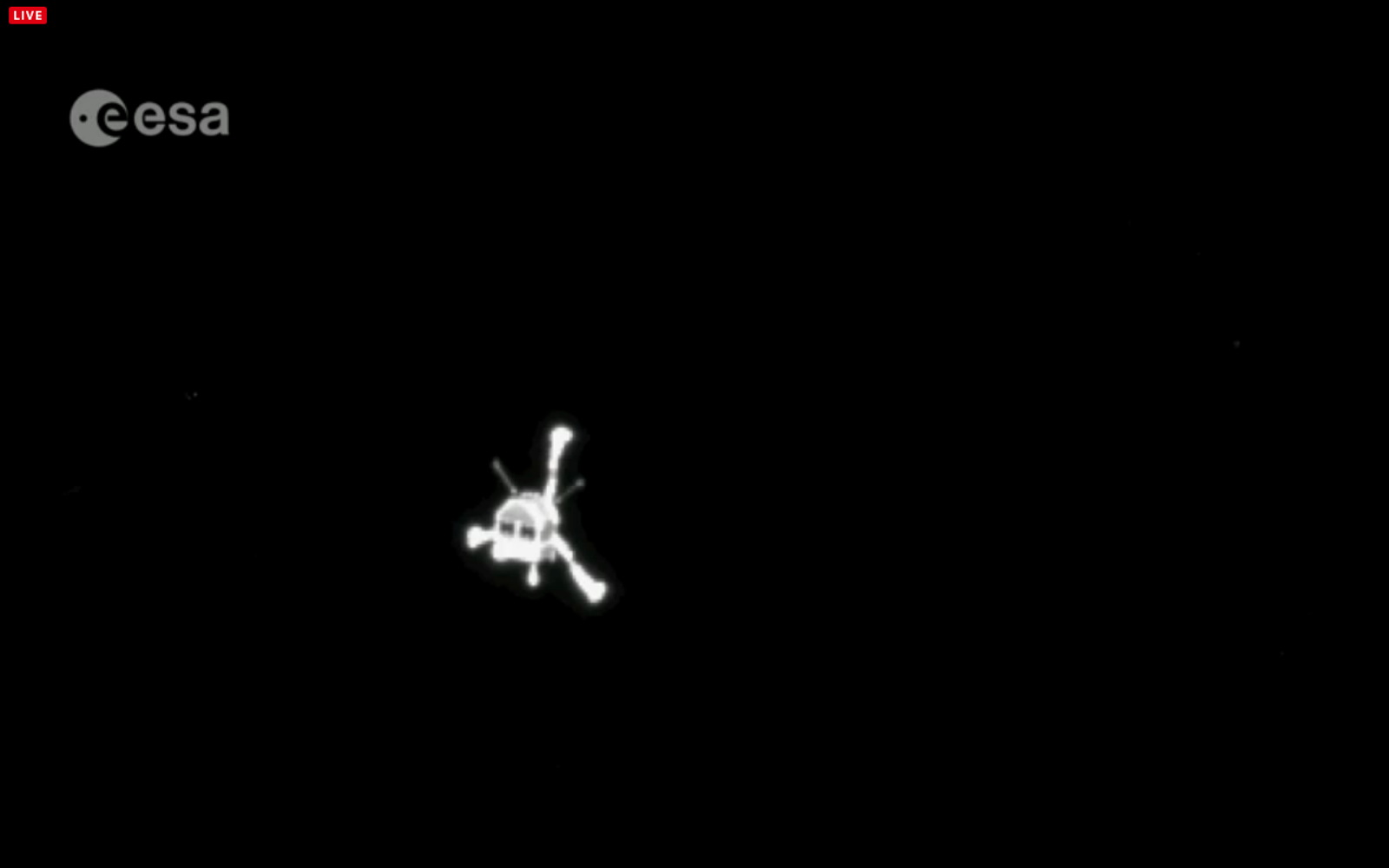
This story was updated at 4 p.m. EST on Nov. 13.
The next few days will be action-packed for Europe's Philae lander, which pulled off a historic comet landing on Wednesday morning.
Philae, part of the European Space Agency's (ESA) Rosetta mission, touched down on Comet 67P/Churyumov-Gerasimenko early Wednesday (Nov. 12), becoming the first spacecraft ever to make a soft landing on one of these icy remnants of the solar system's long-ago formation.
Philae's two harpoon anchors did not fire as planned during the touchdown, however, and the 220-lb. (100 kilograms) probe bounced off 67P twice before settling back down on the comet's surface, mission team members said during a press conference Thursday. [See images from the comet-landing mission]
Philae appears to have survived its dramatic landing in good shape, which means that it's already quite busy gathering data. The mission plan calls for the lander's "first science sequence" phase, or FSS, to start immediately upon touchdown and continue until its primary batteries run out. This will likely happen after two to three days, ESA officials have said.
"The FSS provides 'a first taste of the comet' in a way impossible to achieve through a flyby or orbiting spacecraft," Philae lead scientist Hermann Böhnhardt wrote in a blog post in September.
After FSS comes the long-term science phase, during which Philae will be powered by backup batteries recharged by solar cells.
Get the Space.com Newsletter
Breaking space news, the latest updates on rocket launches, skywatching events and more!
This second phase could last several months if everything goes well, ESA officials say. Or it could end quickly if, for example, comet dust coats the lander's solar panels; nobody knows what will happen. The most optimistic scenario has Philae gathering data until March 2015, when it will become too hot to operate. (Comet 67P is currently heading toward the sun; its closest approach comes in August 2015, when the icy object will get within 115 million miles, or 186 million kilometers, of our star.)
Philae will take photos of 67P's surface and use 10 different instruments to gather a variety of data during both of these science phases.
The lander "will do an on-the-spot analysis of the composition and structure of the comet’s surface and subsurface material. A drilling system will obtain samples down to 23 cm [8 inches] below the surface and will feed these to the spectrometers for analysis, such as to determine the chemical composition," ESA officials wrote in a Rosetta FAQ.
"Other instruments will measure properties such as near-surface strength, density, texture, porosity, ice phases and thermal properties," they added. "Microscopic studies of individual grains will tell us about the texture. In addition, instruments on the lander will study how the comet changes during the day-night cycle, and while it approaches the sun."
Meanwhile, the Rosetta mothership will continue studying the 2.5-mile-wide (4 kilometers) Comet 67P from orbit. Together, the Rosetta orbiter and Philae should help reserachers learn a great deal about comet composition and behavior, which in turn should shed light on the conditions prevalent during the solar system's early days, mission officials say.
The $1.3 billion Rosetta mission launched in March 2004 and rendezvoused with Comet 67P a decade later. On Aug. 6 of this year, the Rosetta mothership became the first probe ever to enter orbit around a comet.
While Philae's work may end in a few months, the orbiter should keep gathering data through at least December 2015, ESA officials say.
Follow Mike Wall on Twitter @michaeldwall and Google+. Follow us @Spacedotcom, Facebook or Google+. Originally published on Space.com.
Join our Space Forums to keep talking space on the latest missions, night sky and more! And if you have a news tip, correction or comment, let us know at: community@space.com.

Michael Wall is a Senior Space Writer with Space.com and joined the team in 2010. He primarily covers exoplanets, spaceflight and military space, but has been known to dabble in the space art beat. His book about the search for alien life, "Out There," was published on Nov. 13, 2018. Before becoming a science writer, Michael worked as a herpetologist and wildlife biologist. He has a Ph.D. in evolutionary biology from the University of Sydney, Australia, a bachelor's degree from the University of Arizona, and a graduate certificate in science writing from the University of California, Santa Cruz. To find out what his latest project is, you can follow Michael on Twitter.









